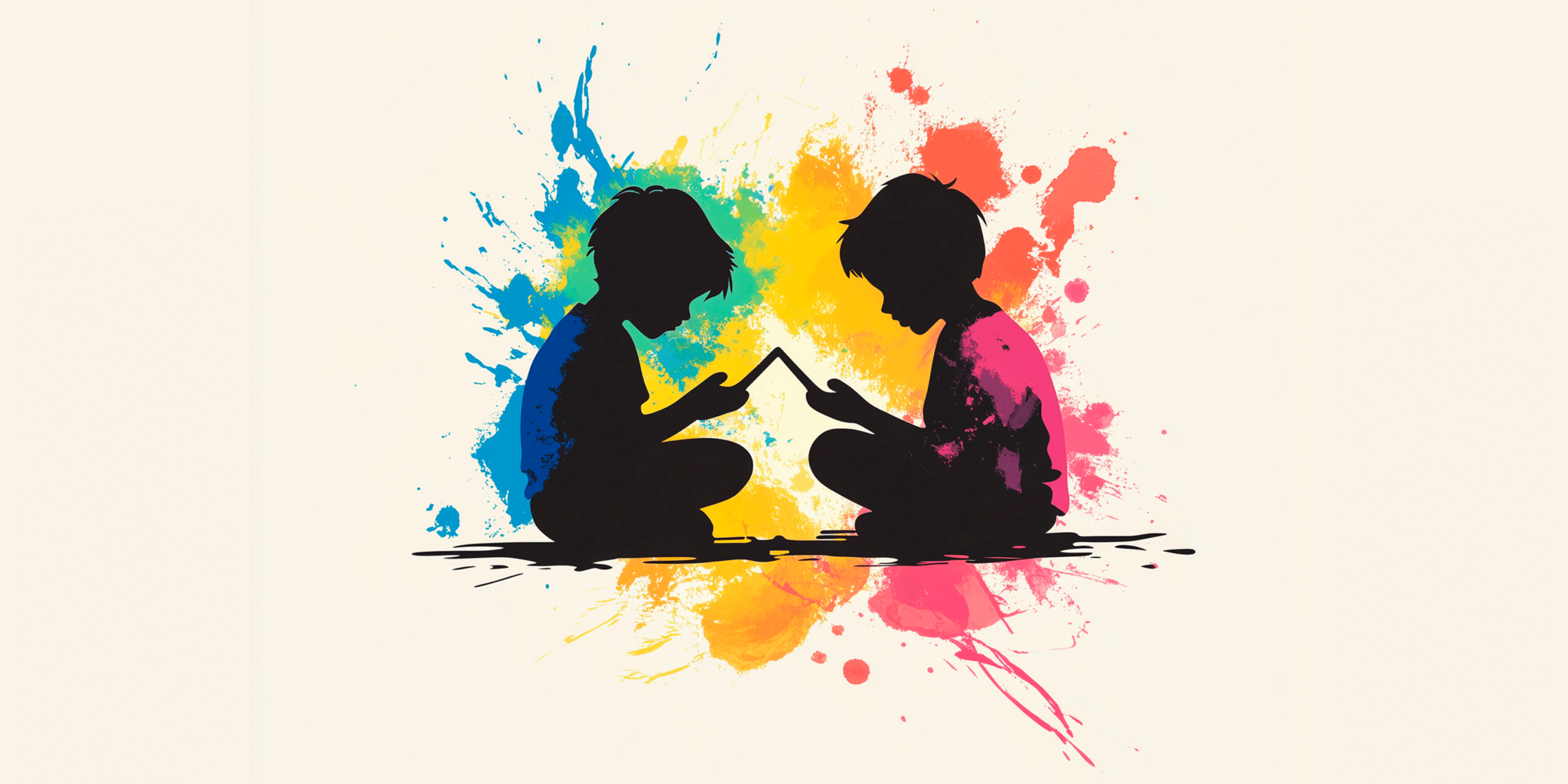Last Updated on September 30, 2025 by Lisa Whaley
Picture-based communication has evolved from prehistoric cave paintings to today’s sophisticated digital tools, revolutionizing how people connect across cultural and linguistic boundaries.
Modern systems combine AI-powered technology with thoughtfully designed visual elements to create personalized solutions, especially benefiting those with autism and communication challenges.
From interactive AAC devices to cloud-based platforms, these tools offer customizable symbol libraries and voice output capabilities that enhance learning and self-expression. The expanding world of visual communication continues to reveal new possibilities for meaningful connection.
Key Takeaways
- Picture-based communication systems combine symbols, visuals, and technology to help people express thoughts, needs, and emotions effectively.
- Universal symbols and consistent layouts ensure clear understanding across different contexts and cultural backgrounds.
- Modern digital tools offer customizable libraries, voice output, and cross-platform integration for seamless communication experiences.
- Visual aids benefit various fields, from special education and healthcare to business presentations and cross-cultural communication.
- AI technology enhances picture-based communication by generating personalized, culturally sensitive content tailored to individual needs.
The Evolution of Visual Communication Through History
Since the dawn of human civilization, visual communication has served as humanity’s most instinctive and universal language, transcending spoken words and written text.
From prehistoric cave paintings depicting successful hunts to ancient scripts and visual hieroglyphs that told stories of gods and kings, humans have consistently relied on pictures to share their experiences and knowledge.
The Renaissance art movement elevated visual storytelling to new heights, while propaganda posters later demonstrated the power of images to unite communities and inspire action.
Today’s digital age has revolutionized picture-based communication through modern infographics that simplify complex data, digital emojis that express emotions instantly, and social media platforms that prioritize visual content.
This evolution reflects humanity’s enduring need to connect through images, particularly benefiting those who face verbal communication challenges.
As technology advances, visual communication continues to break down barriers and create more inclusive ways for everyone to express themselves and understand others.
Understanding Key Components of Picture-Based Systems

These components must work together seamlessly, allowing users to combine individual symbols into meaningful sequences that express complex thoughts, needs, and emotions.
The thoughtful arrangement of symbols, whether through digital devices or physical boards, creates pathways for users to build increasingly sophisticated messages that mirror natural language development.
Symbols and Visual Elements
Symbols and visual elements form the foundation of effective picture-based communication systems, serving as the building blocks that enable non-verbal individuals to express their thoughts, needs, and emotions.
Through carefully selected iconic imagery, these systems create an intuitive bridge between abstract concepts and their visual representations, making communication more accessible for those who struggle with traditional speech.
The most effective symbolic representations incorporate universally recognizable images that maintain consistency across different contexts and situations. These elements must be clear, culturally appropriate, and developmentally suitable for the user’s cognitive level.
When designing or selecting symbols, it’s essential to take into account factors such as color contrast, size, and visual complexity to guarantee they’re easily distinguishable and meaningful to the individual using the communication system.
Sequential Message Construction
Building meaningful communication goes beyond individual symbols to encompass the thoughtful arrangement of visual elements into coherent messages.
Through sequential storytelling, users can construct clear narratives that express their thoughts, needs, and experiences in a logical flow. This structured approach helps develop essential communication skills while reducing frustration.
Visual narratives become powerful tools when arranged in meaningful sequences, allowing users to share complex ideas that single symbols alone can’t convey.
By connecting symbols in a deliberate order, communicators can express time-based concepts, cause-and-effect relationships, and emotional journeys.
This sequential construction mirrors natural language patterns, helping users develop stronger communication skills while building confidence in their ability to share their unique perspectives with others.
The result is more engaging, precise, and personally meaningful exchanges that enhance social connections.
Benefits and Applications Across Different Fields
Through innovative communication methods that bridge understanding, picture-based systems have revolutionized how people connect across numerous fields and applications.
These systems have enhanced visual literacy while facilitating cross-cultural communication in ways that transcend traditional language barriers.
From healthcare settings to educational environments, picture-based tools have become invaluable for conveying complex information clearly and effectively.
In special education, picture-based communication has transformed how children with autism spectrum disorders engage with their world.
Teachers and therapists now rely on visual supports to help students develop essential life skills, while parents use picture schedules to establish routines and reduce anxiety.
In business settings, professionals utilize visual aids to present data and concepts to diverse audiences.
Healthcare providers have adopted picture-based tools to explain medical procedures and guarantee patient comprehension across language differences.
These applications demonstrate how visual communication continues to break down barriers and create meaningful connections in our increasingly interconnected world.
Essential Tools and Technologies for Visual Communication

Technology’s rapid advancement has revolutionized the landscape of picture-based communication tools, offering an unprecedented array of options for visual expression and connection. Modern visual design software, tablets, and specialized AAC devices now empower individuals with communication challenges to express themselves more effectively than ever before.
Essential communication tools include high-resolution cameras, touch-sensitive displays, and robust graphic design applications that support symbol-based communication systems.
These technologies integrate seamlessly with specialized AAC software, featuring customizable picture libraries, voice output capabilities, and intuitive interfaces that adapt to users’ unique needs.
Cloud-based platforms enable real-time sharing and collaboration, while mobile apps provide portable solutions for on-the-go communication support.
For professionals and caregivers working with non-verbal individuals, these tools represent a gateway to deeper understanding and meaningful interaction, fostering independence and self-expression in ways previously unimaginable.
Best Practices for Creating Effective Visual Messages
Creating effective visual messages demands careful consideration of several key design principles that directly impact communication success. Strong visual hierarchy guarantees that the most important elements stand out clearly, making communication more intuitive for individuals with autism spectrum disorder.
Understanding color psychology helps create calming, engaging visuals that support learning and emotional regulation. When designing AAC materials, it’s vital to maintain consistency in symbol placement and sizing while incorporating clear, high-contrast elements that draw attention to significant communication points.
Each visual should serve a specific purpose, whether it’s expressing needs, sharing emotions, or supporting daily routines. The thoughtful arrangement of pictures, combined with appropriate spacing and borders, helps prevent visual overwhelm while maximizing comprehension.
Overcoming Cultural and Linguistic Barriers With Images

Carefully selected iconic imagery and cultural symbols help convey meaning across diverse populations, though it’s crucial to verify that visual metaphors resonate appropriately within different cultural contexts.
Successfully managing cross cultural visuals requires thorough research into image interpretation norms across target communities. Context relevance becomes critical when designing narrative visuals that must maintain emotional resonance across multiple cultural groups.
Simple, universally understood symbols often prove more effective than complex imagery that may carry different meanings in various cultures.
When creating visual communication tools, it’s important to reflect on how diverse audiences will process and respond to specific images.
Testing materials with representatives from different cultural backgrounds helps confirm that visual messages maintain their intended meaning while respecting cultural sensitivities and traditions.
The Future of Picture-Based Communication in Digital Age

The digital age has revolutionized picture-based communication, transforming traditional visual aids into dynamic, interactive tools that seamlessly integrate across multiple platforms and devices.
AI-powered systems are now creating personalized visual content that adapts to individual communication needs, making picture-based communication more accessible and effective for users of all abilities.
As technology continues to advance, we’re witnessing the emergence of sophisticated digital storytelling platforms that combine customizable symbols, real-time translation capabilities, and intuitive interfaces to bridge communication gaps in ways previously unimaginable.
Digital Storytelling Evolution
Since digital storytelling first emerged as a transformative tool for communication, it’s revolutionized how we share experiences and connect with others across cultural and neurological boundaries.
Digital narratives have evolved from simple slideshows to immersive, multi-sensory experiences that accommodate diverse learning and communication styles.
Today’s visual evolution in storytelling incorporates interactive elements, augmented reality, and AI-powered features that adapt to individual needs.
These advanced tools help bridge communication gaps for children with autism and other communication differences, allowing them to express themselves more effectively through customizable visual sequences, animated characters, and dynamic storyboards.
As technology continues to advance, digital storytelling platforms are becoming increasingly accessible, intuitive, and responsive to users’ unique communication preferences, creating more inclusive spaces for self-expression and connection.
AI-Generated Visual Communication
Recent advances in artificial intelligence have sparked a revolution in picture-based communication, transforming how we create and customize visual supports for diverse communicators.
AI-generated imagery now offers unprecedented flexibility in producing personalized visual content that adapts to each individual’s unique communication needs and cultural context.
These cutting-edge tools can instantly generate custom symbols, social stories, and communication boards that resonate with users’ specific experiences and preferences.
The technology’s ability to create culturally sensitive and age-appropriate visuals has particularly benefited autistic children who rely on picture-based communication systems.
As AI continues to evolve, it’s becoming increasingly sophisticated at understanding context and generating nuanced visual representations that support meaningful communication.
This technological advancement opens new possibilities for creating more inclusive and effective communication solutions for everyone who uses visual supports.
Multi-Platform Visual Integration
While digital communication platforms continue to evolve rapidly, modern picture-based communication systems are increasingly embracing seamless integration across multiple devices and operating systems.
This cross-platform integration enables users, particularly those with autism spectrum disorders, to maintain visual consistency as they move between smartphones, tablets, and computers throughout their daily routines.
Today’s multi-platform AAC solutions offer synchronized symbol libraries, personalized vocabularies, and customized visual layouts that automatically update across all connected devices.
This technological advancement guarantees that nonverbal communicators can express themselves confidently in any setting, whether at home, school, or therapy sessions.
The seamless experience reduces cognitive load and anxiety while promoting independence and social interaction, making it easier for families and caregivers to support their loved ones’ communication journey across different environments and situations.
Frequently Asked Questions
How Can I Protect My Visual Content From Unauthorized Use and Copying?
Content creators can protect their visual works through several effective methods.
Applying visible and invisible watermarking techniques helps deter unauthorized copying while maintaining image quality. They should also consider copyright registration, which provides legal protection and the ability to pursue infringement claims.
Digital rights management tools, embedded metadata, and clear usage terms further safeguard content.
Regular monitoring of online platforms helps detect unauthorized use and enables swift enforcement action.
What File Formats Are Best for Different Types of Visual Communication?
Like choosing the perfect brush for a masterpiece, selecting the right file format is essential for visual communication.
JPEG advantages shine when handling photographs and complex images with rich color gradients.
PNG transparency makes it ideal for logos and graphics that need clean backgrounds.
GIF animations bring content to life through simple motion, while SVG scalability guarantees graphics stay crisp at any size.
Each format serves as a unique tool in the visual communicator’s arsenal.
How Do Colorblind Individuals Interpret and Interact With Picture-Based Communication Systems?
Color perception challenges affect how colorblind individuals interact with visual communication systems, but there are effective solutions.
Modern accessibility features include high-contrast symbols, pattern-based distinctions, and customizable color schemes that accommodate different types of color blindness.
Developers are creating inclusive picture systems using distinct shapes, textures, and labels to guarantee everyone can understand the intended meaning, regardless of how they perceive colors.
What Are the Legal Considerations When Using Stock Images in Communications?
Professionals practicing picture-perfect communication must carefully consider copyright agreements when using stock images.
They’ll need to understand various licensing options, which can range from royalty-free to rights-managed permissions.
It’s crucial to obtain proper authorization, maintain accurate records of usage rights, and respect intellectual property laws.
Organizations should establish clear protocols for image acquisition and usage to avoid potential legal complications.
When in doubt, they should consult legal experts for guidance.
How Can I Measure the Effectiveness of My Visual Communication Efforts?
Organizations can effectively measure their visual communication success through several key methods.
They’ll want to track visual engagement metrics like views, shares, and time spent viewing content, while also gathering qualitative audience feedback through surveys and comments.
It’s crucial to monitor how different demographics interact with visual content and analyze which types resonate most strongly.
Regular A/B testing of visual elements helps refine communication strategies and guarantees messages connect meaningfully with intended audiences.
Final Thoughts
A picture’s worth a thousand words rings especially true in today’s visually-driven world. As we’ve explored throughout this guide, picture-based communication isn’t just changing how we interact—it’s revolutionizing accessibility for those who struggle with traditional communication methods.
From ancient cave paintings to modern AAC devices, visual communication continues to break down barriers and create connections. It’s clear that the future of human interaction will increasingly rely on the power of pictures to bridge our divides.




















